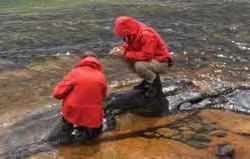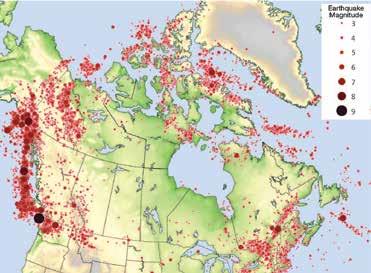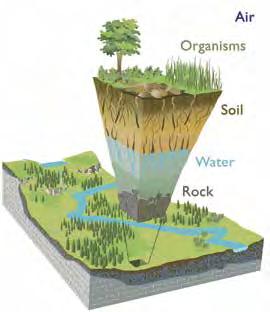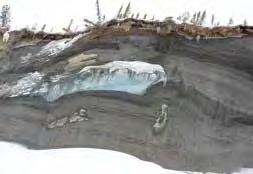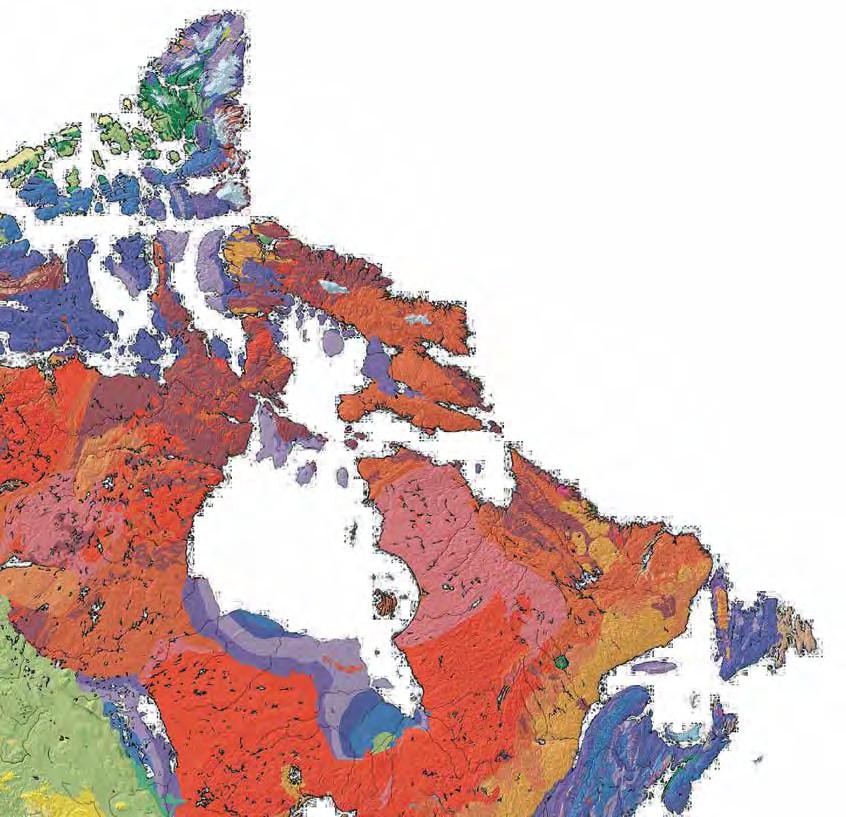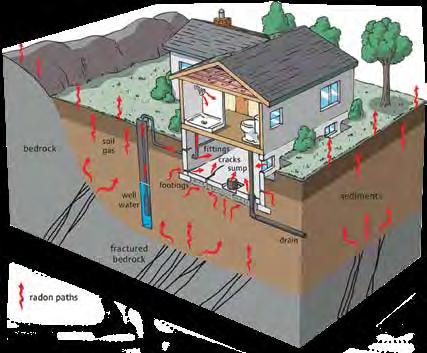
5 minute read
Geoscientists serve the needs of society
GEOSCIENTISTS SERVE THE
NEEDS OF SOCIETY
DID YOU KNOW
that Canada’s highest mountain, Mount Logan in southwestern Yukon, is named after a geologist?
Sir William Edmond Logan was the first director of the Geological Survey of Canada, founded in 1842 to encourage a viable Canadian mining and energy industry. It is Canada’s oldest scientific institution, older than the nation itself, and employs about 600 people.
W. Notman/Wikimedia Commons Geoscience has important impacts on many aspects of our lives: where we live; the materials used to make our homes, electronic devices, cities, and transportation; the crops we grow; how we communicate; and the water, energy, and material resources we use. Knowledge of the Earth’s composition and how it functions is critical to most aspects of our society.
GEOSCIENTISTS ARE EXPLORERS Geoscientists are geologists, geochemists, and geophysicists who work in the many subdisciplines of geoscience. Examples include paleontologists, who study fossils to understand the history of life on Earth and determine geological ages; hydrogeologists, who search for and aid in managing water resources; mining and petroleum geologists, who lead the search for natural resources; geomorphologists, who study landforms and how air, water, and ice can mould the landscape; and geohazards experts, who study the causes of hazards, such as earthquakes and landslides, and are able to assess the risks involved. They explore the Earth and study the interrelated natural systems to arrive at an integrated understanding of how our planet functions.
Many geoscientists work closely with engineers to safeguard the development of our cities and towns by assessing water resources, soil stability, earthquake risk, groundwater contamination, and stone, sand and gravel (aggregate) supplies. Other geoscientists travel to remote locations around the world to collect field data and take rock, soil, water, and ice samples for study and analysis. Creating maps, interpretive sections, and three-dimensional models – based on field data and remote sensing – is a vital skill for geoscientists.
Geoscientists are not only interested in the surface but the entire Earth, which extends more than 6000 kilometres from the surface to the centre. As the deepest borehole reaches just 12 kilometres into the crust, geoscientists undertake geophysical surveys, such as seismic or gravity surveys which image the subsurface, and examine rocks presently at the surface that originally formed deep in the crust and upper mantle to interpret the structure of the Earth’s interior. This information helps us to understand the formation and evolution of our home planet.
DID YOU KNOW
that rocks dating from Earth’s earliest history are found in the Acasta Gneiss Complex in Canada’s Northwest Territories?
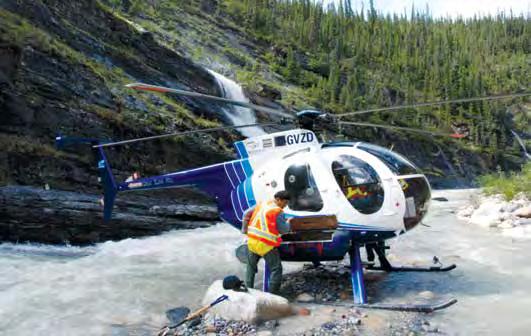
They were dated at 4.03 billion years old by examining the decay of minute amounts of uranium trapped in zircon crystals.
H. Falck
GEOSCIENTISTS WORK IN MANY WAYS TO IMPROVE OUR LIVES Canada’s geoscientists are part of a global network of geoscientists at universities, government geological surveys, research agencies, museums, consulting firms, and in industry. Geoscientists at universities provide high quality research that may be either fundamental (expanding the frontiers of geoscience knowledge), or applied (advancing the use of new knowledge in practical contexts). They are also training the next generation of researchers and workers. Geoscientists in government and industry and those working as consultants use their skills more directly to meet particular needs of society – whether they are working to improve bedrock maps, accurately delineate a mineral or energy resource, or finding a new longterm municipal water supply. Together, as an integrated community of science professionals, geoscientists work to address the needs of society by exploring and building a better understanding of the Earth.
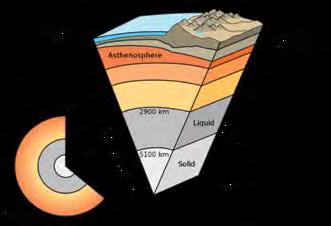
CANADA’S RESOURCE ECONOMY Canada celebrated 150 years as a nation in 2017 – a nation that has a modern, complex, globally integrated economy, in part through the wise use of its natural resources. The use of Canada’s abundant mining and energy resources contribute strongly to our identity and to national, provincial, and territorial economies. In resource-reliant communities such as Yellowknife, Northwest Territories, or cities such as Calgary, Alberta, or Sudbury, Ontario, Canadians rely on incomes derived from employment in the natural resources sectors or in supporting industries.
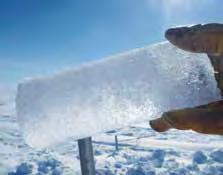
THE EARTH IS CONSTANTLY CHANGING Changes to the Earth occur at variable rates. Earthquakes and volcanic eruptions are sudden, but continents move on average at the same rate as our finger nails grow! Changes that are slow to human perception, such as the erosion of a mountain range by rivers or variations in global temperatures and precipitation levels, can fundamentally change the planet over time spans of thousands to millions of years.
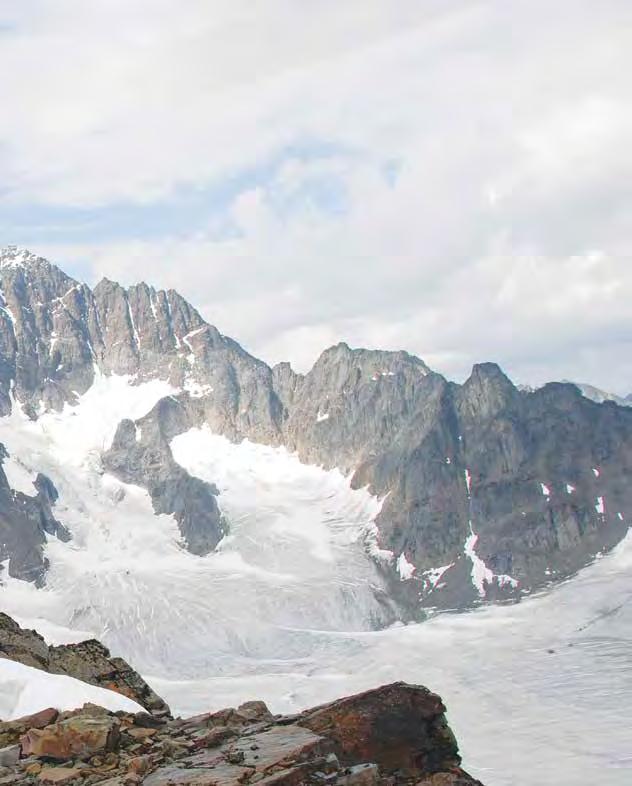
Geoscientists identify, record, and interpret these changes to understand how the Earth has evolved and changed over the ages. Equipped with this information, decisionmakers can develop informed policy to manage Earth’s mineral, energy, and water resources in the face of a continually changing planet and to inform land-use planning to ensure environmental protection and mitigation of geological hazards, such as floods, landslides, volcanoes, and earthquakes.
DEEP TIME
The Earth’s 4.6-billion-year history is recorded in the rocks – how continents and oceans have evolved and moved, the changing composition of the atmosphere, and when and where mountain ranges were formed and reshaped over billions of years. Humans have only been present for a small fraction (<0.05%) of Earth’s history. Geoscientists have a unique perspective, looking long before humans existed to observe the structure, sequence, and properties of rocks and sediments, as well as fossils, to reconstruct Earth’s history. Early geologists used the changing assemblages of fossils in rocks to determine the relative ages of the rocks. Fossils remain important for correlating rocks but for precise (or absolute) ages, geoscientists can measure the radioactive decay of elements, such as uranium, in specific minerals to determine the age of rocks formed millions, if not billions, of years ago.
USGS/Wikimedia Commons
THE CANADIAN ICE CORE ARCHIVE
An unassuming freezer at the University of Alberta in Edmonton contains tubes of ice drilled into Canadian ice caps. The ice cores are up to 200 metres long, drilled into ice sheets in the Canadian High Arctic, back as far as 19651 .
The oldest ice is 80 000 years old. Geoscientists calculate the age of the ice by looking at its shape and texture, and inclusions such as sea salt, sulphates, trace metals, dust, sand, and even organic material like pollen. Just like the rings of a tree, these ice cores tell a story about past temperatures, past conditions, past atmosphere, recent changes, and recent pollution.
USGS/Wikimedia Commons
“We look at ice cores to see how climate has varied in the past, and what may have caused the variations. It’s important for understanding the rhythm of climate change for the last 70 000 to 80 000 years and the forces that are involved in it.”
Martin Sharp, Professor, Department of Earth and Atmospheric Sciences, University of Alberta


